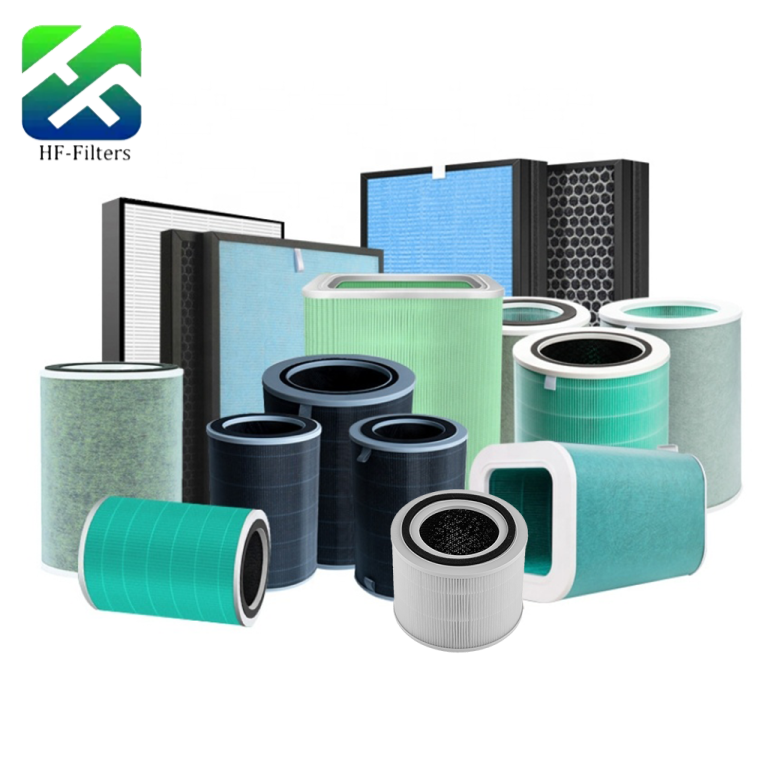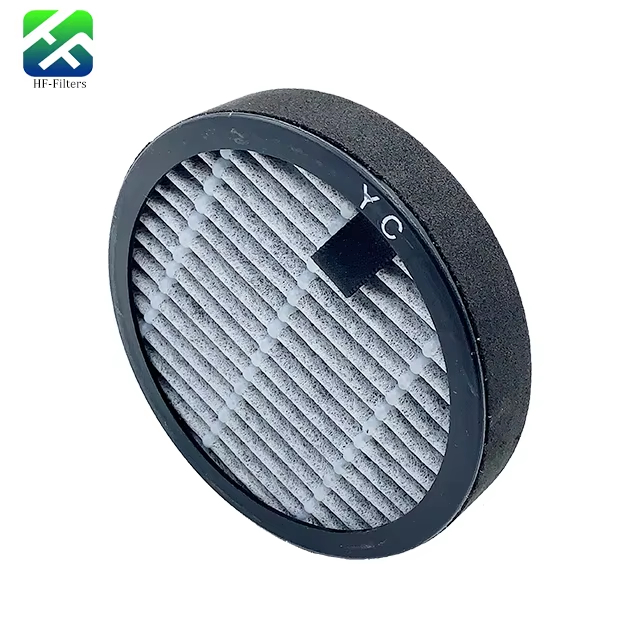When it comes to keeping the air in your home or workspace clean, picking the right air filter makes all the difference. You might worry about dust buildup, allergens floating around, or even odd smells lingering after cooking or smoking. Air filters tackle these issues head-on, trapping particles and improving airflow without much hassle. If you’re hunting for reliable options, check out Healthy Filters, a company based in Shenzhen that’s been crafting air purification solutions since 2016. They focus on everything from HEPA filters to custom setups, with certifications like CE, ROHS, and ETL backing their quality. Plus, their U.S. warehouse in Nashua means quick shipping for folks overseas. Head to their solutions page for tailored advice, or explore becoming a distributor if you’re in the trade.

Fiberglass Filters
You often see fiberglass filters as the go-to for basic air handling in homes or light commercial spots. They work simply, pulling in air through layers of spun glass that snag larger debris before it clogs your system. Think of them as the first line of defense in a standard HVAC setup, especially in places with moderate dust like garages or workshops.
Basic Construction Using Spun Glass Materials
These filters rely on high-strength glass fibers formed into a dense mat, much like the paint stop glassfiber types that capture overspray in booths. The fibers resist breaking and hold up under steady airflow, with options in thicknesses from 50mm to 100mm for different needs. In heat recovery systems, they trap particles effectively at temperatures up to 170°C.
Low-Cost Option for General Dust Capture
Priced low, they grab dust with average arrestance rates around 85% to 90%, based on EN779 standards. Models like PS-60 or PS-100 offer dust holding capacities of 3200g/m² or more, making them practical for ventilation where you swap them out every few months to avoid pressure buildup.
Healthy Filters’ Glass Fiber HEPA Panel for Enhanced Efficiency
For better performance, consider a fiberglass-based panel that boosts efficiency without hiking costs too much. It uses 100% ultra-fine glass fibers treated for high capture rates, handling particles down to fine levels in clean rooms or labs.

Pleated Filters
Pleated filters step up the game by folding the media into zigzags, which lets more air pass through while catching more stuff. If your concern is balancing airflow with decent particle removal in a busy office or store, these fit right in—they reduce strain on your fan and keep energy bills in check.
Extended Surface Area for Improved Airflow
The pleats create extra space, like in medium efficiency box designs for commercial HVAC. This setup allows rated airflows up to 3200m³/h with initial pressure drops as low as 30Pa, using synthetic fibers or non-woven fabrics that conform to MERV ratings for steady performance.
Medium Efficiency in Capturing Larger Particles
They excel at nabbing particles over 5 microns, with efficiencies hitting 40-95% in MERV 8 to 14 ranges. Take laminated mesh media—it’s corrosion-resistant and washable, ideal for central AC pre-filtration where dust loads vary daily.
Medium Efficiency Box Air Filter for Commercial HVAC Systems
Look into a box-style filter built for commercial use, featuring multi-layer structures like spunbond PP and melt-blown fabrics. It handles larger particles in high-volume systems, with customizable sizes to match your setup.

HEPA Filters
HEPA filters are what you turn to when tiny pollutants like pollen or bacteria become a real headache, especially in homes with allergies or medical facilities. They filter air down to the smallest bits, ensuring cleaner breathing spaces without much noise or fuss.
High-Efficiency Capture of Fine Particulates
Built with ultra-fine glass fiber or PP paper, these trap 99.97% of particles at 0.3 microns. Models like H13 or H14 use special processes for low resistance, suitable for end-filtration in clean environments where air must stay sterile.
99.97% Removal Rate Down to 0.3 Microns
This rate comes from rigorous testing, with efficiencies up to 99.995% in higher grades. In practice, they manage airflows from 500m³/h to 3000m³/h, using separators like aluminum foil to maintain structure under constant use.
Air Purifier HEPA Filters for Home and Office Use
A solid choice is a HEPA setup for purifiers, folding materials like PP+PET into compact shapes. Square or cylindrical designs last 8-12 months, combining with pre-filters to avoid quick clogs in everyday settings.
Electrostatic Filters
Electrostatic filters draw in particles using a charge, much like how static clings socks from the dryer. They’re handy if you hate constant replacements and want something that washes clean, addressing worries about waste and ongoing costs in variable environments.
Charge-Based Attraction of Particles
The media gets charged to pull dust and pollen, similar to synthetic fiber pockets with static fibers for high capture rates. This boosts efficiency without dense packing, keeping airflow smooth even in systems with fluctuating loads.
Reusable Design with Washable Media
Many feature polyester or non-woven fabrics that rinse off, extending life like pre-filter media that handles multiple cleanings. With low resistance around 4-6Pa, they suit central ventilation where you check them quarterly.
Custom Solutions for Versatile Applications
Pair Healthy Filters with tailored options, such as combining with carbon for odor control. This versatility fits odd setups, drawing from over 15 years of manufacturing know-how to meet global standards without overcomplicating things.
Activated Carbon Filters
Activated carbon filters shine when odors or chemicals are your main gripe, soaking up gases that other types miss. Picture clearing smoke from a kitchen mishap or volatile compounds in a workshop—they make the air feel fresh fast.
Adsorption of Odors and Volatile Compounds
Using powdered or granular carbon, they grab benzene or formaldehyde with adsorption rates over 65%. Sandwich structures wrap carbon in non-woven layers for dual filtration, handling up to 150g/m² content in compact forms.
Effective for Smoke and Chemical Removal
Proven in waste gas treatment, they remove smoke odors efficiently with low resistance under 25Pa. Honeycomb or flat designs work in purifiers, where carbon from coconut or coal targets specific pollutants like those in smoking areas.
Active Carbon Air Filter for Smoking Odor Elimination
Try a custom active carbon filter for purifiers, rated H13-H14 with honeycomb filling for low wind drag. It tackles smoking smells head-on, using treated carbon for strong absorption in home appliances.

Why Choose Healthy Filters for Air Filtration Needs?
Picking a supplier matters as much as the filter type, especially when you need consistent quality and support. With factories certified under ISO9001 and advanced testing centers, they deliver products that exceed basics, easing fears of subpar performance in critical spots like hospitals or factories.
Proven Expertise from Over 15 Years in Manufacturing
Years in the game mean refined processes, from needle-punching fabrics to melt-blown tech for masks and filters. This background ensures reliable items, like those sold across North America and Europe with positive reps.
Customized Solutions Tailored to Global Markets
Options abound, with special sizes on request and materials like anti-bacterial or TiO2 for added functions. Whether for humidifiers or vacuum cleaners, adaptations fit your exact setup, cutting down on mismatches.
High-Quality Products Exceeding Industry Standards
Certifications such as SGS, FCC, and UL back their gear, with flame-resistant media and high dust capacities. This beats average expectations, providing peace of mind in demanding applications.
FAQ
Q1: How often should you replace fiberglass filters?
A: Swap them every 1-3 months, depending on dust levels—check for buildup to prevent airflow drops.
Q2: Do pleated filters work in high-humidity areas?
A: Yes, many use moisture-resistant synthetics, but pick ones with anti-mold treatments for best results in damp spots.
Q3: Can HEPA filters remove viruses?
A: They capture particles down to 0.3 microns at 99.97%, which includes many viruses, making them great for health-focused spaces.

